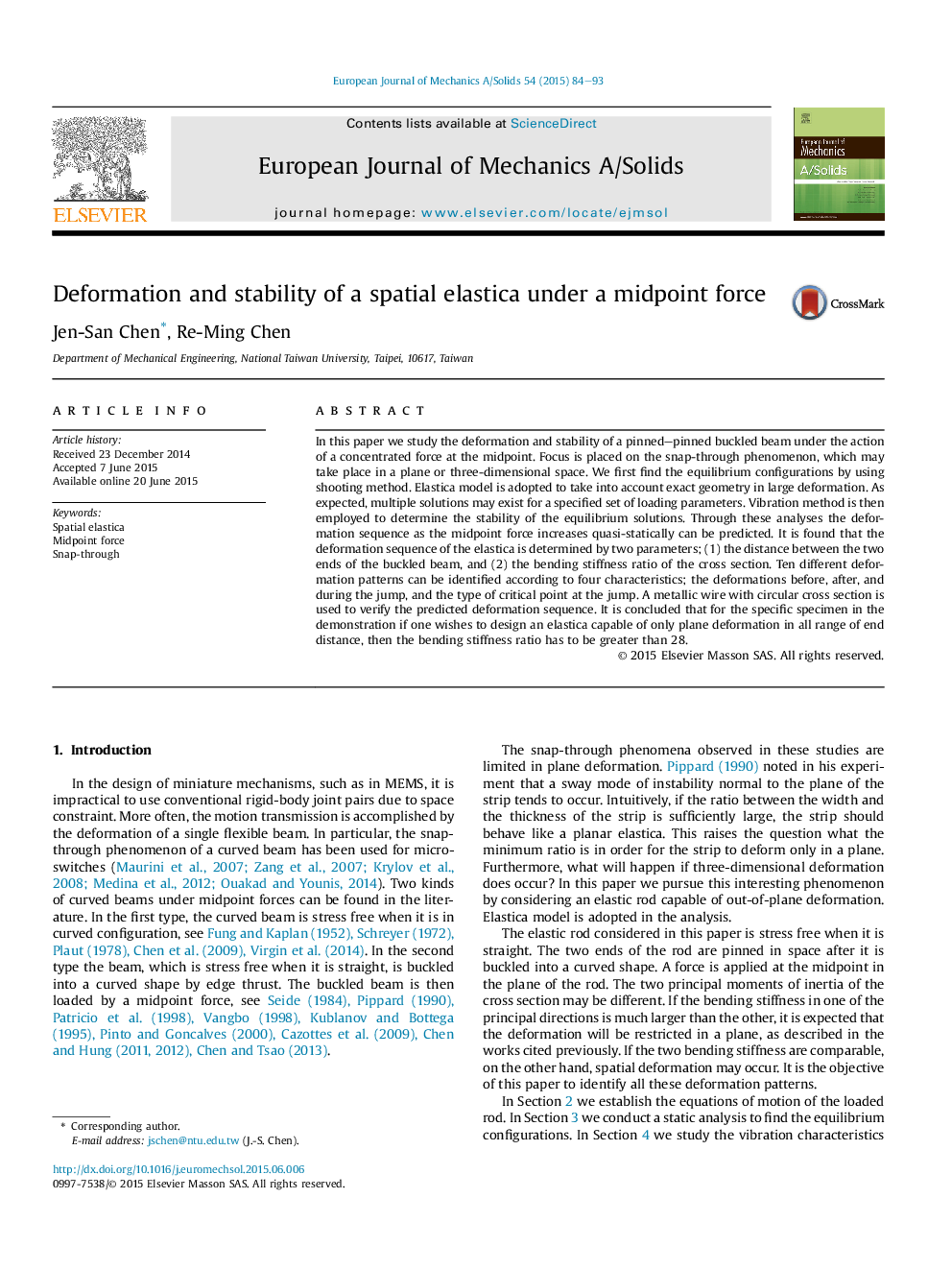| Article ID | Journal | Published Year | Pages | File Type |
|---|---|---|---|---|
| 773498 | European Journal of Mechanics - A/Solids | 2015 | 10 Pages |
•Deformation sequence of a pinned buckled beam under a midpoint force is investigated.•Spatial elastica model is adopted.•Deformation sequence is determined by end distance and stiffness ratio of the cross section.
In this paper we study the deformation and stability of a pinned–pinned buckled beam under the action of a concentrated force at the midpoint. Focus is placed on the snap-through phenomenon, which may take place in a plane or three-dimensional space. We first find the equilibrium configurations by using shooting method. Elastica model is adopted to take into account exact geometry in large deformation. As expected, multiple solutions may exist for a specified set of loading parameters. Vibration method is then employed to determine the stability of the equilibrium solutions. Through these analyses the deformation sequence as the midpoint force increases quasi-statically can be predicted. It is found that the deformation sequence of the elastica is determined by two parameters; (1) the distance between the two ends of the buckled beam, and (2) the bending stiffness ratio of the cross section. Ten different deformation patterns can be identified according to four characteristics; the deformations before, after, and during the jump, and the type of critical point at the jump. A metallic wire with circular cross section is used to verify the predicted deformation sequence. It is concluded that for the specific specimen in the demonstration if one wishes to design an elastica capable of only plane deformation in all range of end distance, then the bending stiffness ratio has to be greater than 28.
